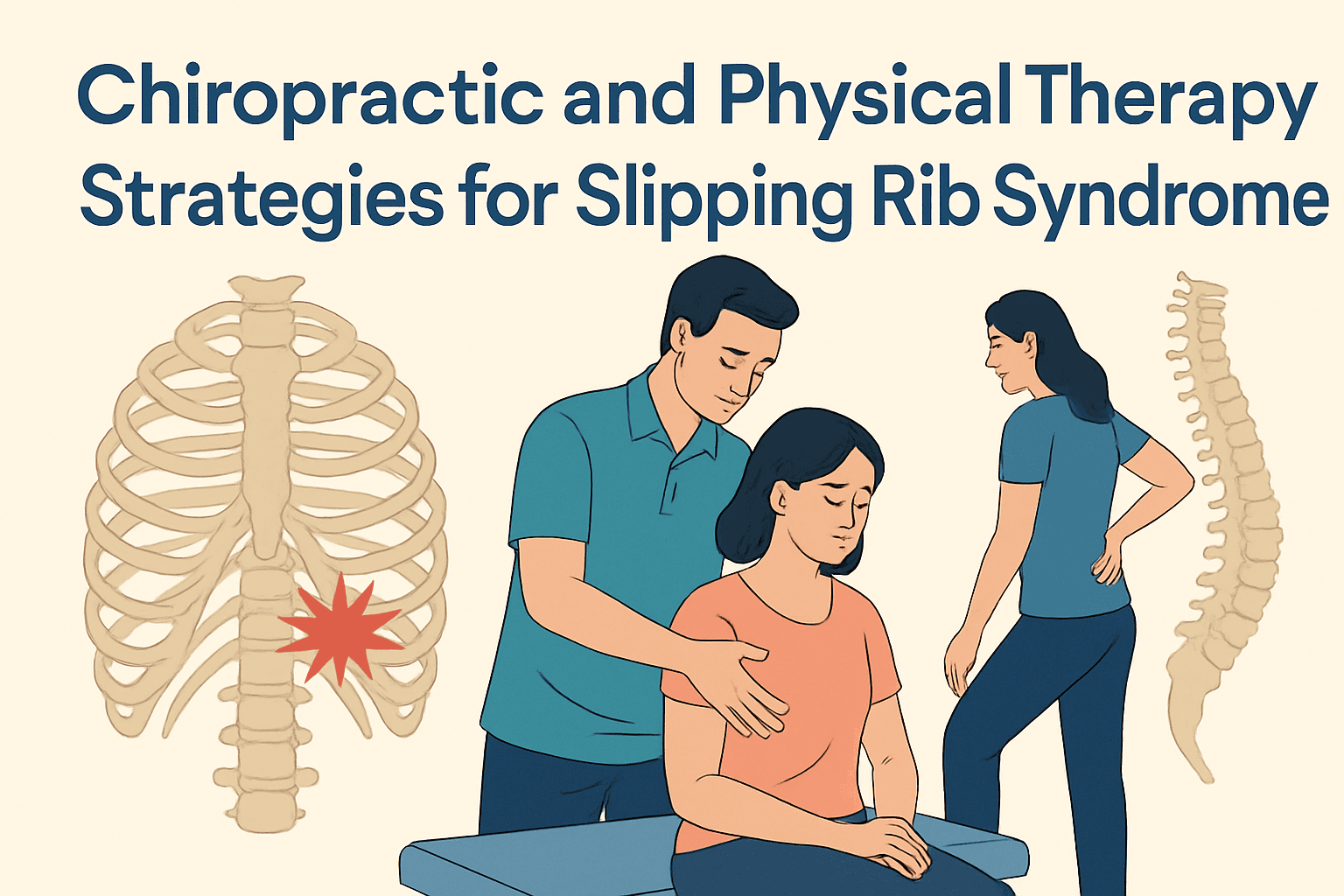Slipping Rib Syndrome (SRS) is typically painful and underdiagnosed. It is when the lower ribs slide further than they normally do. This can compress nerves or irritate muscles. Patients with SRS typically have a sudden pain in the lower chest or upper abdomen, especially with motion or deep breathing.
Most individuals first learn they have something else, muscle strain, costochondritis, or even gallbladder disease before a diagnosis of SRS is made. That is why manual therapists like physical therapists and chiropractors are so important. They are trained to observe very closely for movement patterns and rib function. Patients get better and are best served when these clinicians share information with one another.
Understanding Slipping Rib Syndrome:
SRS is most commonly found on the 8th, 9th, or 10th ribs, which are referred to as “floating” or “false” ribs. These are not directly attached to the sternum but are a second set of ribs supported by soft tissue. When that soft tissue is relaxed or stretched, the ribs can displace or become displaced.
Generally, there are:
- Severe, stabbing pain in the lower ribcage
- A sensation of popping or clicking
- Pain with rotation, lifting, or deep breathing
SRS patients can become frustrated after visiting numerous providers without getting a diagnosis. Chiropractors and physical therapists are able to identify this disorder when others are not. They complement each other well in terms of managing and eliminating symptoms.
Assessment Techniques of the Chiropractors and Physical Therapists
An adequate evaluation is the first treatment of SRS. Chiropractors and physical therapists will check the ribs by running their fingers over them to determine movement and tenderness. They will find that a rib protrudes or swings more than usual when the patient twists or bends.
They also explain how the rib cage opens with breathing. If one part is too loose, the other parts will tighten up to protect the body. That creates imbalances and more pain.
Orthopedic testing can also eliminate other disorders. The history of the patient is also significant. If a person reports pain following a cough, twist, or exercise, it is suggestive of SRS.
But before any treatment is given, severe illness such as heart or stomach issues needs to be eliminated. Rib area pain comes from a multitude of reasons, and safety first is the way to go.
For a more in-depth examination of treatment strategies for Slipping rib syndrome, we recommend this comprehensive guide to managing slipping rib pain, which covers additional techniques and considerations.
Manual Therapy and Mobilization of the Ribs
Chiropractors frequently make minor manipulations to make ribs function better. The manipulations are done to restore the rib to its normal position and minimize nerve irritation. Slow mobilization, controlled movement is another method to move the rib back into position.
Soft tissue mobilization is also needed. Physical therapists like working on muscles between the ribs, at the ribs’ sides, and in the lower back. Inter-costal, obliques, and quadratus lumborum (QL) all tighten up when the ribs are unstable.
Other helpful methods are myofascial release, cupping, and tools like IASTM (instrument-assisted soft tissue mobilization). These help to reduce tension in the tissue around the ribs.
Mechanics of breathing are a general aspect of treatment. Non-working ribs alter the breathing rhythms. Helping the patient breathe more symmetrically and in a more regulated manner can decrease pressure on the painful area.
Posture Correction and Core Stabilization Strategies
Poor posture will exacerbate SRS. Slumping, rib flaring, and poor support of the trunk all result in increased strain on the lower ribs. Patients are taught by therapists to sit and stand more ideally.
The center is very crucial in rib stability. Muscles like the diaphragm, transverse abdominis, and multifidus help in the regulation of trunk motion. When these muscles are not strong or are out of phase, less support is provided to the ribs.
Chiropractors and physiotherapists teach simple exercises to build up this support. These can be:
- Pelvic tilts
- Dead bugs or bird dogs
- Side planks with control focus
Functional movement retraining is the second step in the process. It returns people to day-to-day activities and functions pain-free. Positions like twisting, lifting, or bending are done in a way that the ribs are not moving.
Eastside Integrated System and Long-Term Management
Eastside chiropractors and physical therapists utilize their combined care. Their two-care approach allows for the SRS patient to get joint and muscle care at the same time in the same place. Every treatment plan is designed to the individual patient, not from a one-size-fits-all template.
Hands-on treatment is the basis, but education is equally crucial. Patients learn to move more effectively, what they need to avoid doing, and how to deal with flare-ups independently. This tends to result in more solidified ribs and less setback.
Long-term interventions can include stretches, core exercises, and changes in postural or breathing patterns. With close attention, these regimens can decrease pain and best utilize rib function over the long term.
Conclusion
Slipping Rib Syndrome is challenging to diagnose and treat, but getting it right is worth the effort. With correct diagnosis, manual therapy, core training, and postural adjustment, patients tend to get better and have better symptom control.
The integration of the physical therapist and chiropractor assists in developing a body-wide treatment plan for stabilization of the ribs and alleviation of pain. If SRS is detected early and is treated with caution, SRS individuals are able to get back to activities they love, fewer anxious and more confident about moving.

